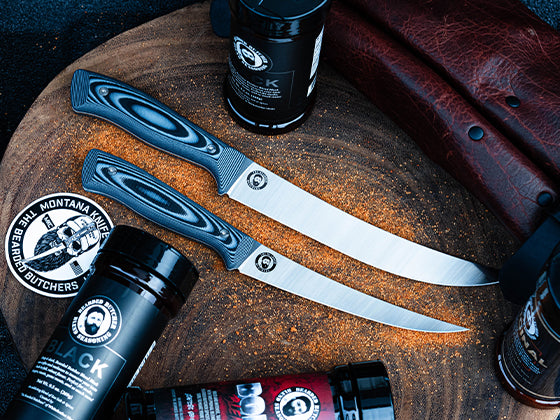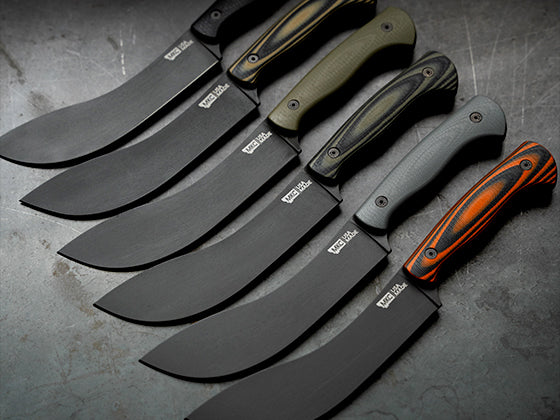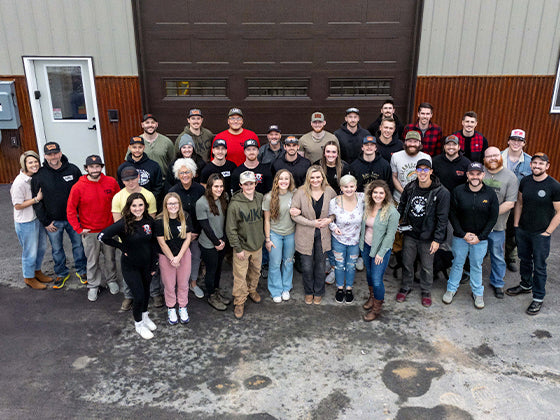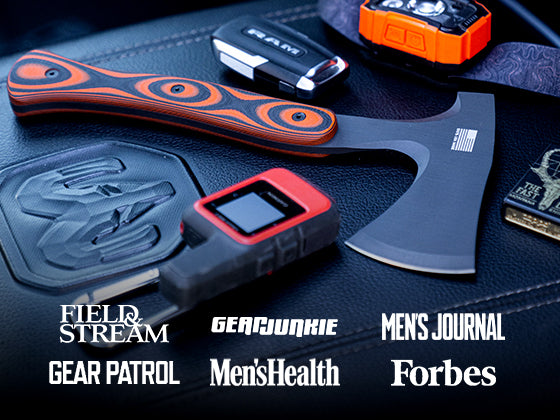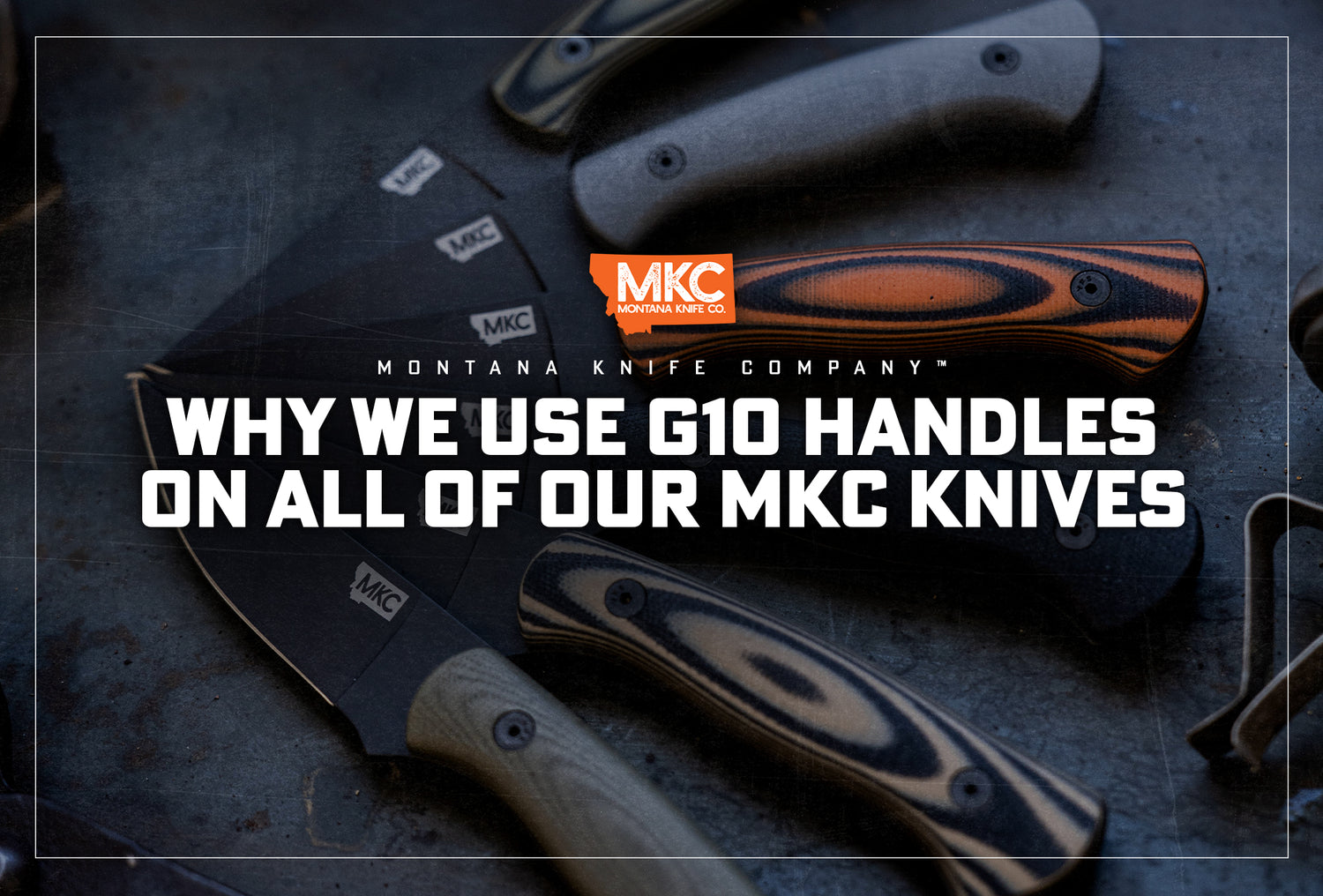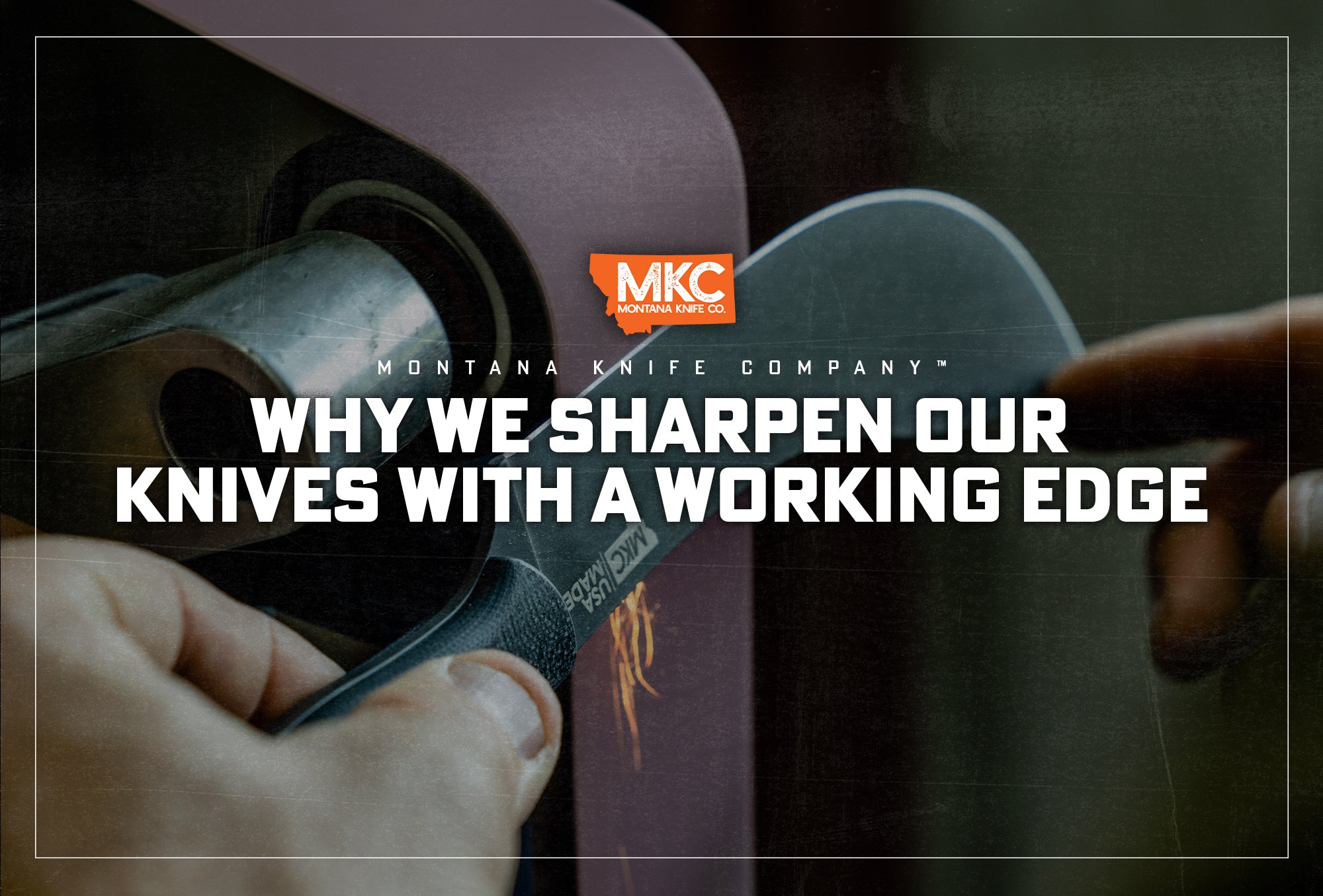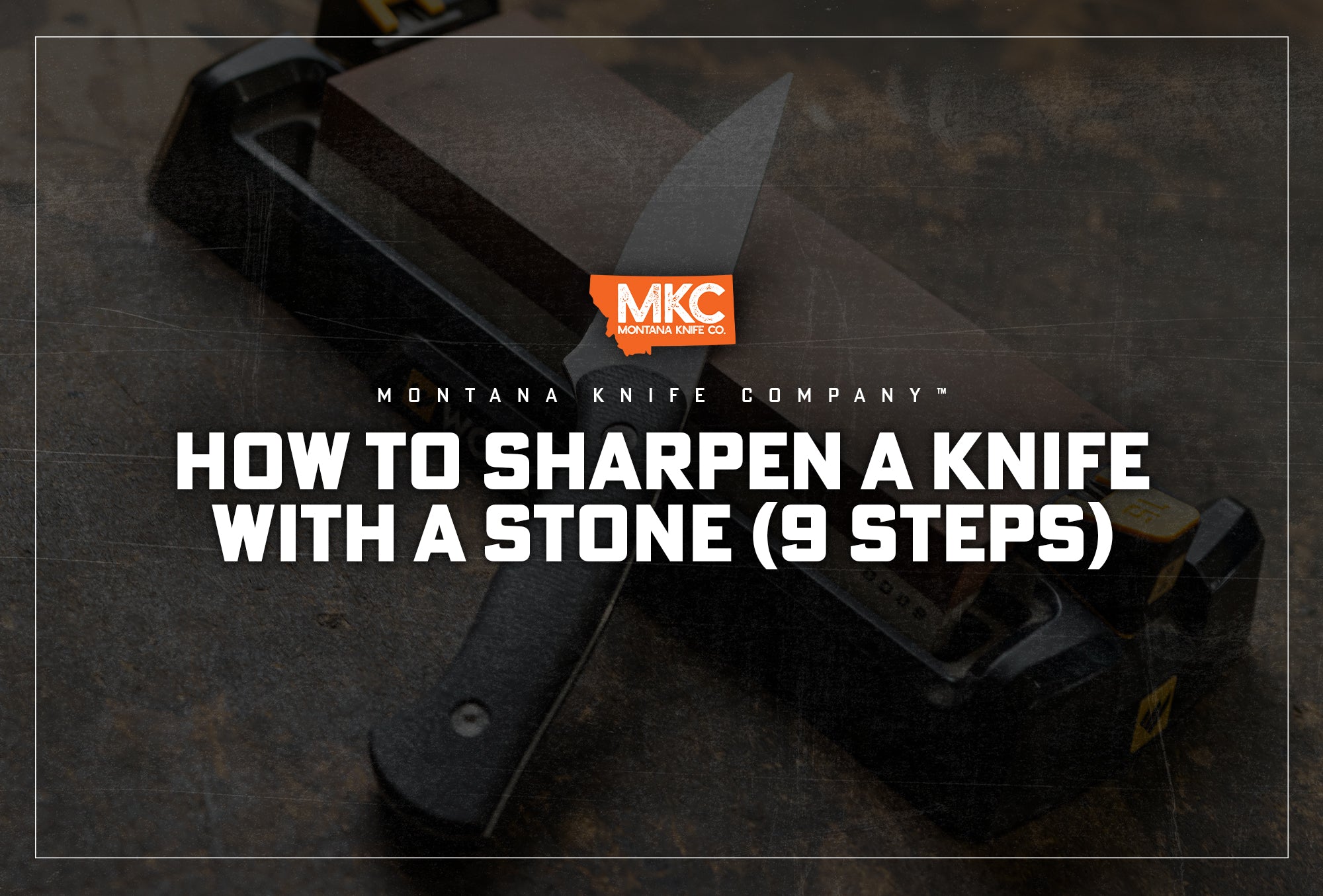Here at Montana Knife Company, we spend a lot of time talking about how we craft our blades. It’s time our handles got some attention, too.
I’m often asked why we make our knives with G10 knife handles. Wouldn’t a wood handle be better? Not necessarily — and it’s time I explain why.
What Are G10 Knife Handles?
G10 is a composite material made from layers of fiberglass and epoxy resin pressed together under high pressure and heated until they’ve cured. It’s the superior choice for knives that are designed to last a lifetime.
I’m sure we have a lot of readers who feel a certain affinity toward wood handles. I do too. They can be beautifully crafted and imbued with the sort of nostalgia knife owners love to see in their tools.
But they also come with a number of challenges.
Why We Don’t Use Wood Handles
On the production side, it can be difficult to source wood without flaws — the average piece of wood contains a plethora of cracks, wormholes, and knots. It’s also a challenge to source wood that’s even in color and hardness.
Of course, there’s also an environmental concern. Sawing down rainforests to make thousands of knives can be frowned upon. This is especially true of exotic hardwoods, which have become much more difficult to source in the last 20 years than they were back in the ’80s and ’90s.
But the key reason MKC doesn’t make wood handles is because of wood’s inadequacy in terms of strength and durability.
As a natural, organic material, wood changes over time. It cracks under extreme conditions (heat, cold, etc.), dries out, and absorbs moisture like water and blood. Every knife owner has found themselves cranking down screws to hold a wood handle together long past its prime.
Wood also tends to warp and create gaps over time, especially if one side is wet and the other isn’t. Wood is less durable for hammering — using your knife to drive in tent stakes, for instance.
So, everything about wood knife handles — aside from the beauty and the nostalgia — is a drawback compared to G10 knife handles, which win in every category we just mentioned.
G10 is as strong as any material can be at that thickness. It will never move, change shape, or lose form the way wood does. It won’t shrink when it dries out, and it won’t stain like wood.
G10 is also easy to work with. It can be made in just about any color — and from a manufacturing standpoint, every G10 knife handle can be made to look the same. When selling a blade online, that’s important. The customer always gets what they see, unlike with a wood handle, which differs according to each cut of wood.

How Does a G10 Knife Handle Compare to Micarta?
G10 and Micarta are quite similar, but there are a few key differences. G10 tends to be nicer to work from a machining standpoint, and in my opinion, G10 has a more vibrant palette with more color potential.
Micarta isn’t as vibrant or handsome, but it can provide a bit more grip in the hand than a G10 knife handle.
While we prefer G10 knife handles and use them on every blade, there are no real drawbacks to using Micarta. The materials are similar, and the main difference is simply a matter of aesthetic preference due to G10’s more extensive color and pattern variability.
Caring for Your G10 Knife Handle
The beauty of the G10 knife handle is that it requires very little care. Just keep it clean with hot, soapy water.
If the color of a G10 knife handle seems like it’s getting dull, soaking it in a mix of mineral oil and paint thinner or acetone will make the color vibrant again.
G10: A Working Material for Working People
G10 knife handles offer durability and longevity along with aesthetics. They may not carry the same artistic feel or invoke the same nostalgia as wood, but we chose them to ensure MKC knives would be as useful as possible for as long as possible in real-world applications.
We design MKC knives to work hard for hard-working people, and G10 keeps up every step of the way.
by Josh Smith, Master Bladesmith and Founder of Montana Knife Company


























